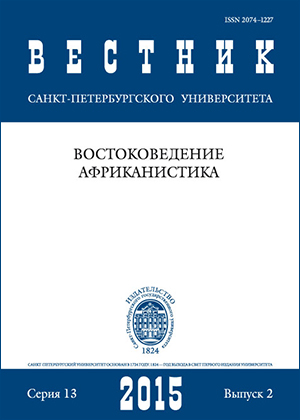Everyday life of Pashtuns in the 17th — the beginning of the 18th centuries: Food, dwelling, home activities (based on the Khataks Chronicle) (part II)
Abstract
The article examines facts on the everyday life of the eastern Pashtun tribes derived from the accounts of The Khataks Chronicle (1641–1724) — the original part of the historiographical compilation Tārīkh-imuraṣṣa‘. Based on numerous excerpts from the Pashto text translated into Russian for the first time the article proves that realities pertaining to food, dwelling and home activities usually stay beyond the focus of the Chronicle’s narration, but even mentioned in passing contribute much to reconstructing the real and trustworthy picture of the authors’ and their milieu’s everyday life. Supported with similar testimonies from parallel Pashto sources — the verses by the Chronicle’s coauthor Khūshḥāl Khān (1613–1689) — the article discusses social aspects of eating, collective meals and etiquette feasts, introduces and analyzes data on main food products of Pashtuns, types of permanent and temporary residences, house building technologies, lodging arrangement, home utensils, domestic animals and pets, as well as some women’s home activities and children’s games. New material collected and inspected in the article aims at including The Khataks Chronicle in the list of working sources on the history of Pashtuns and filling extensive lacunas in the studies of ethnography and culture of the Pashtun tribes in pre-modern times. Refs 7.
Keywords:
Pashto literature, ethnography of Pashtun tribes, source studies
Downloads
References
Downloads
Published
How to Cite
Issue
Section
License
Articles of "Vestnik of Saint Petersburg University. Asian and African Studies" are open access distributed under the terms of the License Agreement with Saint Petersburg State University, which permits to the authors unrestricted distribution and self-archiving free of charge.





